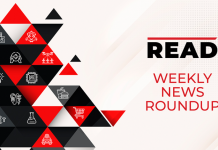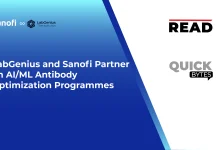Rio Tinto has taken a bold step in its decarbonization journey, signing a Joint Development Agreement (JDA) with Australian cleantech firm Calix to develop a “Zero Emissions Steel Technology” (Zesty™) demonstration plant in Western Australia. The move comes alongside a pause in its earlier BioIron program, signaling a strategic pivot in how the mining giant is tackling emissions in the steel value chain.
What’s the News?
Rio Tinto will invest more than A$35 million in cash and in-kind support. This funding depends on reaching specific project milestones. It will help build Calix’s Zesty Green Iron Demonstration Plant. The plant will be in Kwinana, south of Perth. It’s on a site once planned for Rio Tinto’s BioIron R&D facility. Once built, the demonstration plant will make up to 30,000 tonnes of hydrogen direct reduced iron (H₂-DRI) or hot briquetted iron (HBI) from Pilbara ore. This is pending a final investment decision, expected in 2026.
The process uses electric heating along with hydrogen reduction, allowing for lower emissions and compatibility with lower-grade iron ore. Importantly, Rio Tinto will not be the exclusive user: under the agreement, it obtains a non-exclusive global license to the Zesty technology, can sub-license it to affiliates, and act as a global marketing agent.
At the same time, Rio Tinto has announced a pause in its BioIron™ development, citing technical risk in the current furnace design. Nonetheless, Rio remains committed to BioIron research in partnership with the University of Nottingham and Metso.
The Kwinana location has strong infrastructure benefits. It gives access to utilities and ports. Plus, it’s near the NeoSmelt facility, a key electric ironmaking project with Rio. The demonstration plant also has financial support. Calix secured a A$44.9 million grant from the Australian Renewable Energy Agency (ARENA).
Why It Matters for Materials & Sustainability
This development is a major turning point for materials innovation and green steel. Steelmaking is known for its high carbon emissions, making up about 8% of global CO₂ emissions. By supporting the Zesty process, Rio Tinto is choosing a way to separate its iron ore exports from traditional, high-emission steel production.
1. Technology Shift and Risk Management
The switch from BioIron to Zesty reflects Rio’s recalibration of technological risk. BioIron, which uses biomass and microwave energy, shows promise. Yet, Rio says its furnace design needs more work to “minimise technical risks.”
Zesty is better aligned with current industrial practices. It uses hydrogen, a clean reductant, and electric heating. Plus, it can handle lower-grade ores that might not be used otherwise.
The non-exclusive licensing model allows Rio Tinto to be more than a user. It also acts as a promoter and potential distributor of Zesty. This helps Zesty reach more customers in the steel industry.
2. Scaling Green Iron Production
The demonstration plant’s capacity (~30,000 tpa of H₂-DRI or HBI) is modest, but its real value lies in proving the process at scale. If successful, the tech could be commercialized globally.
The proximity to infrastructure like NeoSmelt is strategically valuable: downstream processing (like electric smelting) could integrate with this plant, creating a near-zero emissions value chain for iron and steel.
Also Read: SkyFi and ICEYE US Partner on All-Weather Earth Observation
3. Policy & Economic Support
Government support is strong: ARENA’s A$44.9 million grant to Calix underscores Australia’s commitment to building a green iron/steel industry.
On a regional level, Western Australian authorities have backed the project enthusiastically. Premier Roger Cook praised it as a key piece of his vision for WA to become a “renewable energy powerhouse.”
Rio Tinto can align with national decarbonization goals and build local skills. This move would help it attract governments and big steel buyers interested in green iron.
Implications for the Materials Industry
This partnership may catalyze broader changes across the materials and sustainability space:
Accelerating Green Steel Adoption: Zesty at scale shows that green iron is cost-effective and technically solid. If it works, more steelmakers might use hydrogen-based reduction technologies. They may also try the toll-processing model.
Market for Lower-Grade Ore: Traditional steelmaking often requires high-grade ore. Zesty’s fit with lower-grade ore may shift how miners assess various ore streams. This is important, especially in areas needing to profit from lower-quality material.
Supply Chain Evolution: A green iron value chain involves Rio (ore), Calix (tech), and partners like NeoSmelt. Together, they can build a circular, low-carbon ecosystem. That means more jobs, innovation, and sustainable export revenue.
Investor & ESG Appeal: For Rio Tinto, this aligns with ESG (Environmental, Social, Governance) goals and enhances its standing with climate-conscious investors. It could also reduce future carbon costs or regulatory risks.
Broader Business Effects
Miners like BHP and Fortescue will likely feel more pressure to adopt low-emissions paths. This could intensify the race to commercialize green iron.
Cost & Financing Dynamics: Early-stage technologies often need financial risk-sharing. With backing from Rio and ARENA, Calix’s Zesty gains credibility, lowering perceived risk for other investors.
Export Strategy: Australia, a major iron ore exporter, could leverage these technologies to supply green iron/steel globally. This could reshape its export value chain from raw ore to value-added, low-carbon products.
Innovation Ecosystem: The move may stimulate more R&D in decarbonising materials. Universities, startups, and energy firms could be drawn into similar collaborations, driving innovation.
Challenges & Outlook
The final investment decision for the Zesty plant is still pending, and commercial risks remain.
Hydrogen supply and cost, electricity sources, and scaling will be critical factors.
Rio’s focus on BioIron R&D shows it wants to hedge its bets. This helps keep options open in a field where green iron technologies are still new.
Conclusion
Rio Tinto has teamed up with Calix to shift its sustainability strategy. By shifting focus from BioIron to Calix’s Zesty process, Rio is placing a significant bet on hydrogen-electric technology to produce green iron. If the demonstration plant succeeds, it could reshape iron ore mining, create a new low-carbon steelmaking value chain, and strengthen Australia’s position in the future green metals economy. For the materials industry and sustainability space, this is a big signal — green steel is moving from lab scale to real-world deployment.




